Tri Saddle Roundup
Nobody complains much about seat posts, stems or spokes because we don't make constant physical contact with them. As with neighbors and family members, we demand the most out of those with whom we are in constant contact. You are in almost constant contact with your saddle.
Last week I wrote about ISM and fi'zi:k saddles; today it's Cobb (its popular Randee is just below), Specialized Power Saddles, Dash and other saddles (by Bontrager, Prologo, Fabric) that appear to live in a genus to themselves.
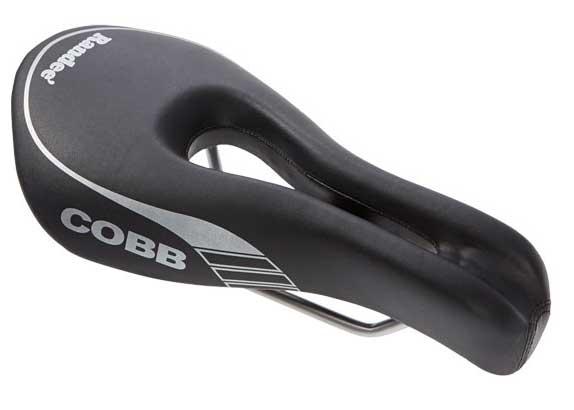
It's clear that ISM was on to something, and companies have been scrambling to respond. ISM has specific, protected features, chiefly that its twin “noses” are not connected by a bridge. This is why you don't see other saddles emulating this. Is the independent movement of these twin forward protrusions (noses) integral to the success of saddles of this type? ISM says yes. I don't know.
The most ISM-like of non-ISM saddles are those by Cobb, and this makes sense as John Cobb was, early on, a contributor to ISM's business mission before launching his own saddle brand. The Cobb JOF55 is typically ridden boys-off-the-front, as are snub-front ISMs like the PR series saddles.
I've been selling a lot of saddles during our ongoing Slowtwitch Road Shows. I take a device with me to many Road Shows that allows very quick saddle changes. I stick it on the fit bike in the shop's fit studio. Riders stand on the pedals, sit down 5 seconds later, and presto, new saddle. It gives me the opportunity to see how riders respond to saddles when they have the opportunity to ride between 4 and 7 saddles during a 20-minute session.
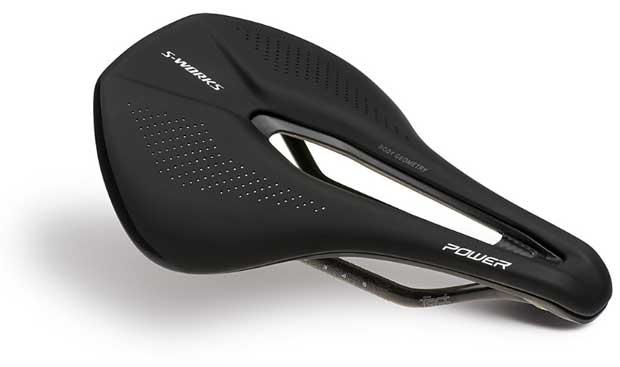
What I have found is that testing saddles in this fashion is like dating: You might not know if he's Mr. Right after the first 5 minutes of the first date, but you know right away if he's Mr. Wrong. This past weekend at Athletes Lounge in Portland, I had the opportunity to slide Cobb, ISM, fi'zi:k and Specialized Power saddles underneath riders.
One rider, specifically looking to fix an extreme saddle problem, liked every saddle tested better than the one she had been riding. fi'zi:k's 55mm and 65mm Tritone saddles were each better than her current saddle; Specialized Power saddles better yet; then her face lit up when a Cobb V Flow Plus was tested. Better yet with a V Flow Max.
She did not want to try any more saddles, stating that she was ready to marry the V Flow Max. This was Mr. Right. But I persisted, one more, and I slid under her a Cobb Randee. This was the keeper.
In my opinion and experience, pressure mapping presents nice metrics when designing a saddle, but nothing trumps the riding experience when choosing a saddle. Over the past weekend, riders elected to purchase at the Slowtwitch Road Show at Athletes Lounge the ISM PN1.1 (at least twice), the Cobb Randee, 1 or 2 ISM PR 2.0 saddles, and a number of Cobb V Flow saddles. There was also at least 1 fi'zi:k Tritone sold (the 55mm width) and a couple of Specialized Power saddles (one Power model is pictured above).
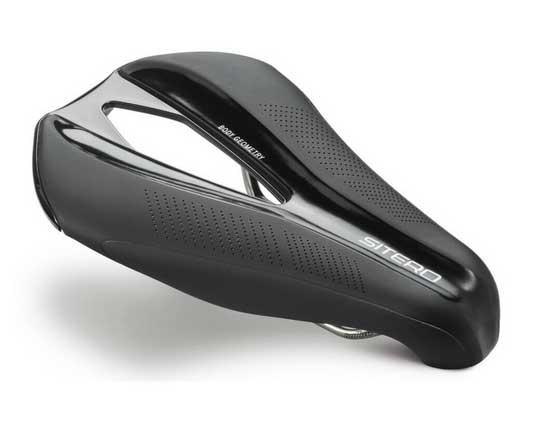
I was behind the curve on the Specialized saddles. This snuck up on me. These saddles have been a big hit and seem to be used both for road and tri. Specialized has been a big saddle seller for years, partly because it makes good saddles, and partly because it had the original prescriptive saddle system with BG Fit. But a lot of people – me included – have been scratching our heads wondering what people saw in the popular Toupe and Romin saddles.
Anecdotally the Specialized Power saddles have made happy customers out of those who tried and discarded Specialized's prior road saddles. “Just switched to it on my road bike from a Toupe then a Romin,” wrote one Slowtwitcher on a current thread on saddles. Longtime Slowtwitcher Dev Paul prefers the Sitero (pictured above), which is Specialized's dedicated tri saddle, to the Power saddle. But Dev is referring now to his tri needs, and the Power saddle was not made to be a tri saddle.
The Power saddle is really catching on in road. Its use in tri seems limited to a distinct kind of rider. “The tri/TT customers who like it are usually those that have some aversion to riding on the nose of a saddle,” writes Athletes Lounge manager Scott Benjamin.
Cobb's saddles are the most versatile, with the most range, when considering all the tri saddle brands. If stranded on a desert island with one saddle brand, it would have to be Cobb, because of this range. It has not got all the versatility of ISM when talking just noseless saddles (no brand does), but the V Flow and Randee round out the Cobb line nicely. The Randee has robbed the V Flow series of sales, but the V Flow still needs to be in every fitter's studio.
There are several saddles that look vaguely alike. Bontrager's RXL Hilo, the Specialized Sitero, the Fabric Tri (pictured below, and Fabric is a Cannondale brand just as Bontrager is a Trek brand), Prologo's T Gale, and Pro Aerofuel (pictured further below) all split the difference between standard and noseless saddles. Are they not simply noseless, but useless, as they are just a half-measure, fulfilling the duty of neither a road nor a tri saddle? Not according to Slowtwitchers.
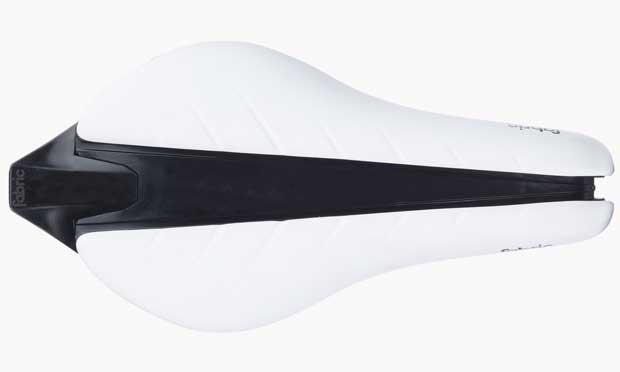
“I ride the Bonty Hilo,” writes one reader. “I made this switch after a few years on ISM saddles: Road, TT, Breakaway and Prologue. The ISMs were great for getting me in aero position, but through some combination of leg or pelvis asymmetry I ended up with inflammation and bursitis in the soft tissue over my left ischial tuberosity that was unbearable. I even demo'd a Dash and found the same result.
“I have a T-Gale on the bench and a Sitero that I've been meaning to try,” he continues, “but they are so similar to the Hilo I'm not sure either could provide an improvement.
“I've been considering a Cobb JOF55 demo due to the narrow nose,” he says, and John Cobb himself touts the JOF55 for this reason. He says it is about 15mm narrower than the typical ISM saddle.
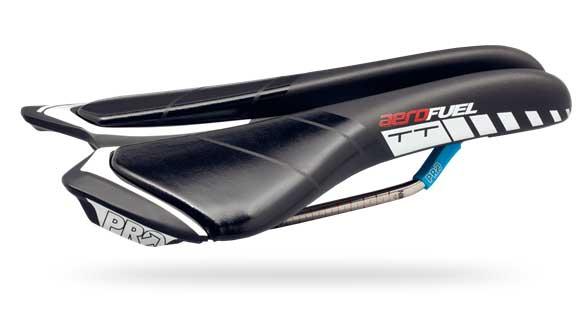
On the other hand, here's a reader who writes he is an “ISM Prologue user. I found the Bontrager Hilo to be a terrible TT saddle but the best road saddle I've ever used by a long shot.” Go figure.
How are these split-nose saddles – which are not wholly unlike what Koobi has been making for years – ridden? “I ride it just like a split nose with junk off the front,” writes a Slowtwitcher, though there are some differences on set up. “Hilo is on my Computrainer Bike and the Sitero is on my P3 Tri bike. The Hilo is mounted with the nose around 4 cm further back from the Sitero relative to BB,” writes Dev Paul.
But not all Slowtwitchers ride these saddles like noseless saddles. “I've got a Bontrager RXL on my TT bike and it's the most comfortable TT saddle I've tried, in comparison to a plain Felt OEM saddle, Arione Tri, ISM Prologue and Cobb Max,” writes a Slowtwitcher. “I ride it like a regular nosed saddle in terms of placement and what bears my weight. It's not 'commando' á la ISM, only difference is that, thanks to full-length split, I can ride it with my body centered rather than pick-a-side.”
Bontrager has introduced a new wrinkle in tri saddles: the Hilo RXL Speed Dial (pictured below), which allows a rider to dial in a split width that has 14mm of width range. I haven't tried it.
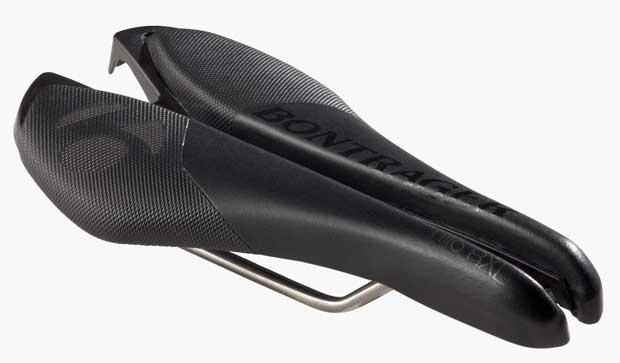
Speaking of dating and marriage, many of those who date Dash saddles report very happy marriages. “After trying all of the ones listed, I'm on a Dash, which is very similar to some of these. It's the best feeling saddle I've ever used. Not a ton of padding, but the design is the first that allows me to actually have my "sit bones" where they're supposed to be without discomfort,” writes longtime Slowtwitcher Gary Geiger.
“I agree with Gary,” writes another Slowtwitcher, who “ditched the Adamo Prologue for a Dash tri saddle and could not be happier.“ Another wrote, “I tried 8 different saddles while being fit. I sat on the Dash and said put one on my bike. I don't care about price.”
He wrote the last line because Dash saddles are expensive. They are very light, but are priced inverse to their weight. “Perhaps it's just me,” wrote this Slowtwitcher, “but it's the best saddle I have ever sat on for a tri position.” It's clearly not just him. Dash (below) has a lot of happy customers.
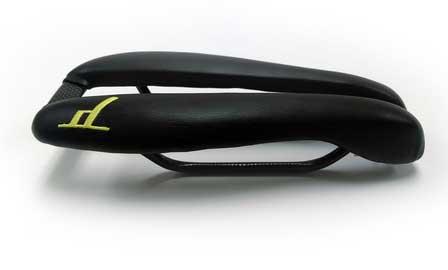
But it's individual. Remember that Slowtwitcher above who reported, “inflammation and bursitis in the soft tissue over my left ischeal tuberosity that was unbearable. I even demoed a Dash and found the same result.”
This underscores the issue with tri saddles. You pick your poison. You have to rest your weight somewhere. In fact, during fittings I often hear, “I have a lot of weight on my armrests,” as I move riders progressively forward. “Okay, but is it uncomfortable?” This confuses my subjects. I see them pondering this question. Then I follow it with, “Where would you rather have your weight, on the pads or on the saddle? It's one or the other.”
These are weight-bearing questions that triathletes need to answer. First, on the fat of the arse or on the soft tissue? if on the fat, then you're not going to be riding with a flat back. If you rotate your pelvis and ride flat-backed, you're going to have a saddle pressure problem that you will need to solve. Moving the saddle and aerobars forward moves some weight from the saddle to the pads. But you still have considerable weight on the saddle. ISM, Dash, and Cobb JOF55 often (not always) task sit bones with the job of supporting weight, relieving soft tissue of that duty. Other saddles support soft tissue, taking pressure off ischeal tubes.


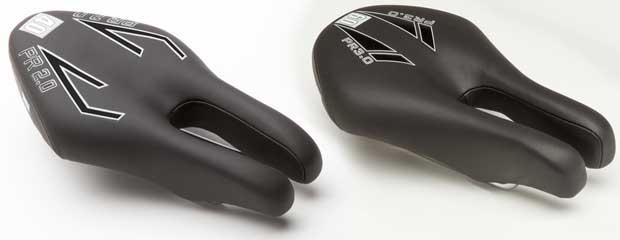
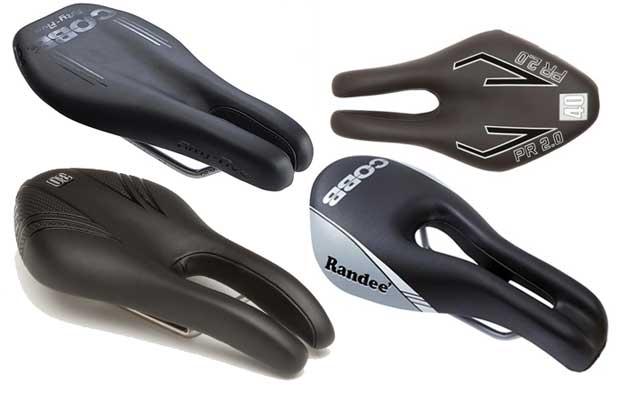
Start the discussion at slowtwitch.northend.network